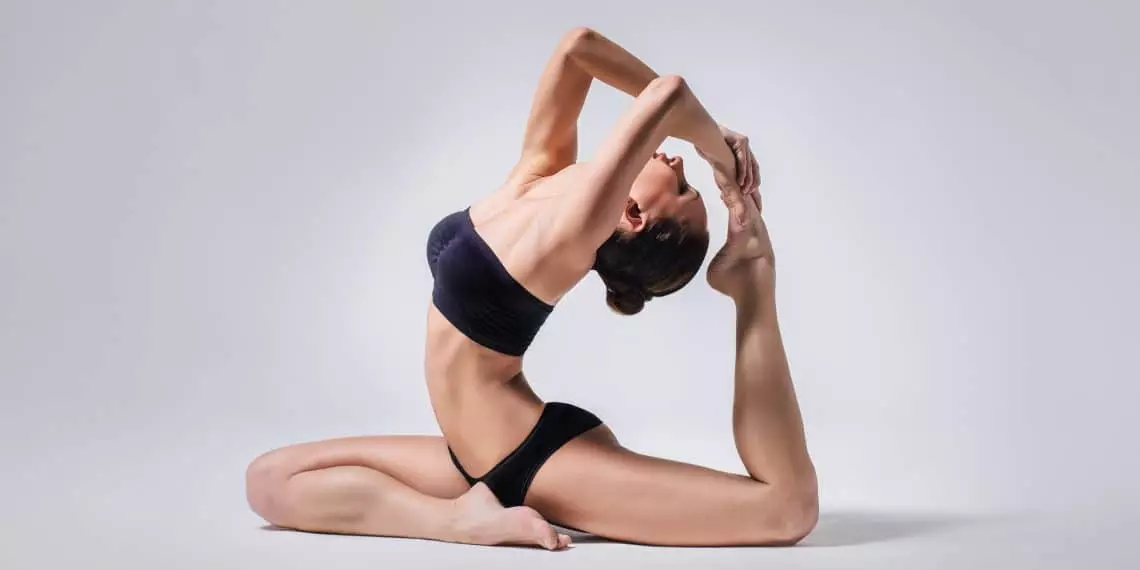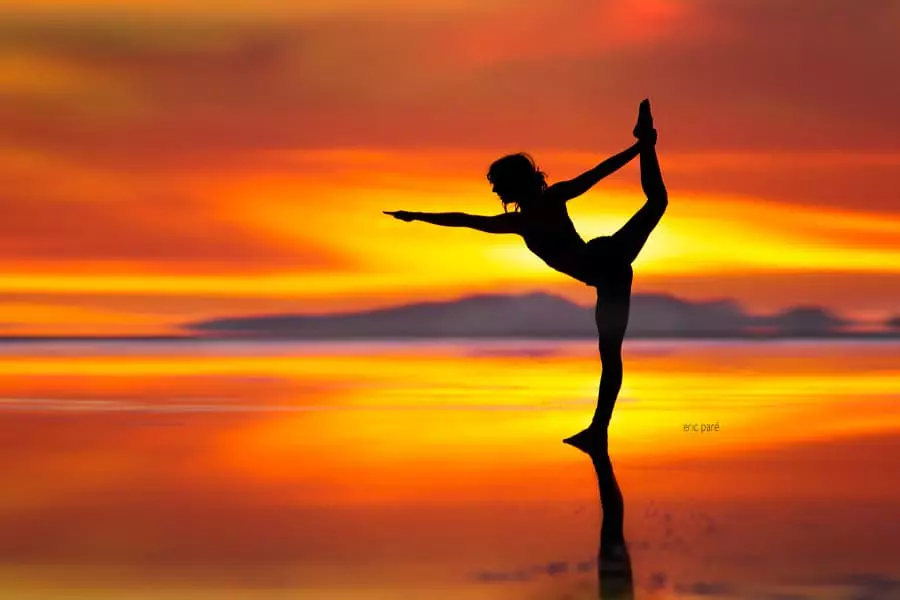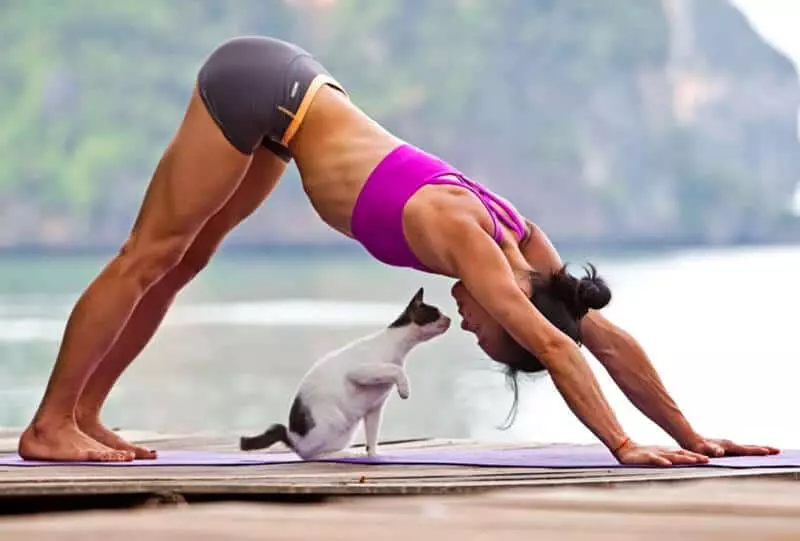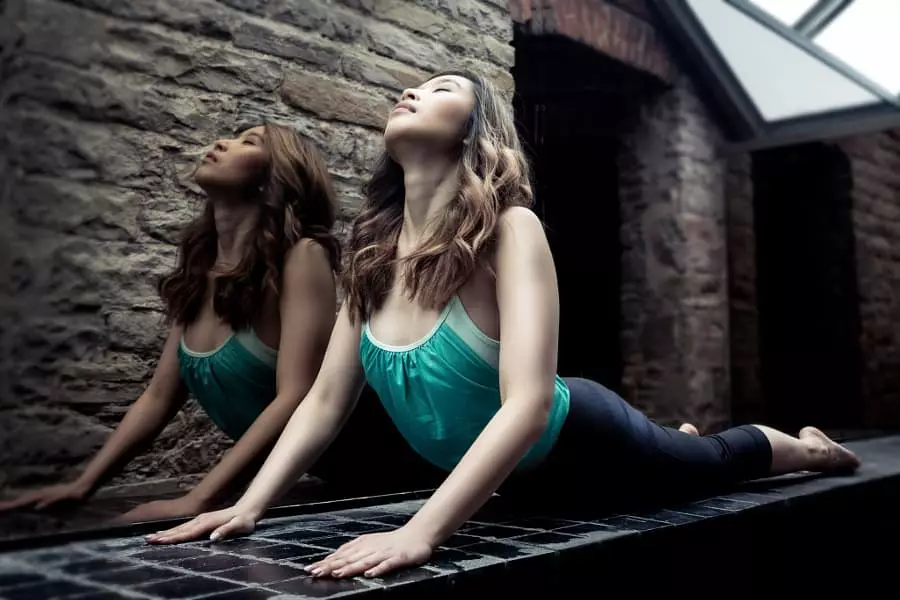Yoga is an ancient practice of improving both the physical and spiritual shells of a person. And what is asana in yoga and for what criteria you can determine the success of its execution? Earlier, any diligent practitioner begins to ask this question. In this material I want to share with you your own thoughts on this matter.

Interesting about yoga
Approximately 2500 years ago, the Rishi Patanjali was written by the treatise "Yoga-Sutra", in which the knowledge of the knowledge was summarized at that time interval.
Find out what awaits you today - a horoscope for today for all zodiac signs
By numerous subscribers requests, we have prepared an accurate horoscope application for a mobile phone. Forecasts will come for your zodiac sign every morning - it is impossible to miss!
Download free: Horoscope for every day 2020 (Available on Android)
Prior to that, most likely, the process of knowledge transfer was exclusively oral - from the mentor to the student. This treatise was formed by 196 schools, 2 of which relate directly to Asan. It may seem strange that the very first and significant text about yoga mentions asana only in several stanches, but it is precisely for these stanzas to really get a lot of useful information for themselves.
"Yoga-Sutra" characterize Asana as a "fixed and convenient posture." And then we get no less strange explanation how you can get the right effect: "Asana is achieved when it is stopped to apply forces and concentrate exclusively in the eternal."
To date, such a characteristic seems rather strange, and it may come that Patanjali simply mocks us with everyone. Is the asana can be an immovable position? After all, when we practice yoga, we begin to shove not only in difficult, but even in very simple asanas.
Isana is a comfortable position? If you take 1000 engaged, then only the units will confirm that they feel comfort in the execution process. Yes, and they can cut a little. As for beginners, any, even uncomplicated television - slopes, deflection or disclosure of hip joints, are able to deliver a lot of painful sensations.
What did Patanjali say then? There are many opinions on this. The simplest of them - yoga does not appear with the effect, but the process. So, supporting immovable and comfortable posture cannot be considered a given and achieving instantly, but is a goal. If you explain differently - so that Asana has become stable and pleasant, everything should be done in stages.
It turns out that progress in yoga classes is not when you with incredible efforts are applied with lips to the footsteps on shaking legs or sit on a twine with a sip of pain. Progress is when you learned how to feel the other degree of comfort in Asanas, before that you delivered only unpleasant feelings.
This radically changes the understanding of yoga, relevant to Western states. After all, the classic Indian tradition says that Promotion is not takes off, for example, in Maiówan. And Promotion is to be fixed in position to the maximum possible amount of breaths with exhalations.
Such a process of breathing makes it possible to calm down, but this is exactly what is the main goal of yoga practice. It turns out that Asana contributes to the development of control skills over his mind.
At the same time, similar to all alive, Asana is not only an external appeal, but also internal charm. Even if Asana is not yet perfect, you can still enjoy it. And when you control your breath and internal sensations in Asan, then the least one is puzzled by its external form.
You have no motivation to show flexibility more than your neighbor in classes. But the motivation of the most secure execution of asana is preserved, as well as obtaining sincere pleasures from her.
Subject to this approach, work is also working above its "ego", a person gets rid of the desire to bet exclusively on the external aspect of Asan. In the philosophy of Asan, there is such a concept as "Aparygraphs", that is, an incubation, in particular, means a quick result on the rug. The whole point is that when you relax psychologically, and also gets rid of the desire to perform an exercise at any cost, encounter external progress.

Varieties asian
All asans can be classified by variation species:- standing;
- seats;
- lying;
- twisted;
- twisted;
- Asana with inclons;
- Asana on balance.
By the type of exposure to asana are:
- stretching;
- twisting;
- power;
- overwhelmed;
- squeezing;
- complementary multiple varieties.
For purposes:
- meditative (customizing the highest levels of yoga);
- Therapeutic plan (having a directional psychological and physiotherapeutic effect on the body).
Gorashshi expresses such an opinion on Asan: "There is such a number of Asan, how many people have lives on the globe. Shiva called eight million four hundred thousand Asan, and they were known only to him alone. From the specified number they were chosen eighty-four asans, among which the fourthkess refers to the most important and helpful. It will be Siddha, Padma, Simha and Bhadra Asana. "
The value of proper breathing
Surely most people are not accustomed to take into account the comfort in the process of classes and are convinced that, in order to get the effect, you should go through the application effort, pain and huge tension. In reality, the opposite principle acts in yoga.
The most faithful position of Asana will be this in which you will feel comfort. Our body has a center of gravity located in the field of a sacrum. The execution of any Asana shifts the center of gravity, while the load is redistributed in such a way as to achieve a balanced state.
In the meantime, you could not achieve a balance, stay in a state of muscular stress, and therefore feel inconvenience. However, as soon as your muscles are in the necessary position (and you adapt to be fixed in it), you will no longer be required by the application effort to keep your body in Asanas. And then you can perform any, even the most difficult exercise with ease, without much effort.
Of course, for an even time, you will feel some sense of internal discomfort even with proper execution of poses, especially if it was infrequently practiced physical activity. But uncomfortable feelings will not be too intense, you will not feel pain, tension or chances.
Features of the correct execution of Asan
Many people with independent practice of yoga make many mistakes. For example, in the process of execution of Asana, AHO Mukha Svanasan (the position of the dog, the muzzle of which turned the book) completely straighten the legs and hold back in perfectly even condition (after all it is so shown in the illustration).
From this there is a very strong tension of the rear surface of hip, popliteal tendons and achille tendons. In the head of practitioners, the thought may appear about stretching with such asana and approaching its correct execution.
When you come to classes with an instructor, it is surprised to find that in the specified position there should be no strong tension of the muscles of the rear surface hollow. The most important condition of Asana is straightening (but a physiological, and not on the string, younger) and the full relaxation of the back, and not pulling the legs.
In the case when it is not possible to fix the body at full foot and straight legs, it is allowed to break the heels from the surface and a slight bending of the knees. At the same time, the main attention in Asan is still paid to the area of the back.
It turns out that when you performed such an exercise yourself, they were not simply not approaching the right result, and on the contrary, moved away from it, trying to repeat the maximum what is shown in the picture. But in reality, the truth is that if you are a newcomer, then simply do not have a chance to fulfill Asana as the instruction indicates.

As another good example, Asana Urrhwa Mukhu Shavasan (or the position of the dog, the muzzle of which is addressed to the top). When executing it according to the instructions, most likely, you will face a voltage in the loan area. And if there are problems with the back, discomfort will be maintained for some other time after the training is complete.
In the group's time classes, we learn that in the process of execution of this Asana, it is recommended to direct the shoulders forward (not separately with rounding the chest department, but together with the back), and the heels are to reach back. When creating such a tension, free omission of the pelvis on the floor is allowed, and you do not feel any tension in the lower back area.
The instruction will not tell you about the right performance of Asana, so consider that the independent search for the correct position is quite time consuming if you are not adapted to experiments with a change in the position of your body.
According to the examples described above, you probably were able to understand that, without having a professional highly qualified instructor, it would be very difficult for you to detect the right position of your body in space and fulfill asans, without causing harm to your spine. So where can you get the necessary help?
How to learn the correct implementation of Asan?
To do this, you will need to perform three points, about which I will tell you more detailed.First moment - finding a coach
A qualified coach with experience will be able to explain to you in which muscles or body areas you must feel tensions, and in what - on the contrary, relaxation. Also with the help of the instructor, you will master the technique of proper breathing and "energy locks" that stimulate the activities of the internal organs.
At least in the process of classes, you can always ask him a question, to understand whether you feel right in any position, should you feel the tension or pain in specific muscles and bundles or the presence of a voltage - a bad sign.
Here it should be noted separately, it is not for each yoga instructor on yoga there is a fairly high qualification and luggage of the necessary knowledge and skills. And therefore, you will have to be patient and watch the behavior of the yoga coaches. The following signs will help identify an experienced specialist:
- He is obliged to build your body, correct all the asanas performed by you, and also tell you about those sensations that arise under the condition of the correct exercise. If your coach simply demonstrates Asana, at the same time does not even leave his rug, then think what's the point to go to it on classes? A much more economical option will be the use of a special application or viewing clips on YouTube.
- He is obliged to give answers to all of your issues. If the coach of concept does not have about those sensations that appear in the body in the process of executing that or other asana, does not understand why the loin stretches you, and it is not able to give you an intelligible council, then think about his competence thoroughly.
- Communication with him should not provoke your negative emotions. A person can have a big luggage of knowledge and skills, but at the same time be so negative in terms of communication and teaching that you will feel internal discomfort at its occupations.
Of course, here you can parry that the personality of the coach is not of great importance, but personally, I am convinced that because of the negative thinking, we cannot concentrate on our own organism and are not able to competently fulfill the asians. After all, in any case, practitioners should be joy, and not in straining, isn't it?
The second moment - confidence in your feelings
If you think that the correct execution of Asan is exclusively in accurately copying them from the pictures, then for detuning you can use the mirror. But many people talk about the fact that the mirrors, on the contrary, worsen the practice, since in this case you concentrate less on what you feel.And it plays a very big role: the coach will tell you what feelings you should experience in the process of execution asan, but you should also control your own feelings.
The assimilation of the concept of the right movements will help you to do without the participation of the coach, but in this case you will have to concentrate even more to the fact that you feel in the process of training.
The third moment - take care of your state after practice.
If you want to understand whether you are suitable for a specific type of sport, coach or training technique, it is worth listening to the feelings that arose in the body after classes.
Therefore, after practicing yoga, take care of some voltage in the body, painful sensations, on the contrary, feelings of relaxation, satisfaction, trimming, and so on. Mark the features of your inner state: are you able to decline for forces or, on the contrary, feel the charge of cheerfulness and energy?
My personal opinion on this issue - if the exercises are useful for you, then after them you should feel good. If your body is felt after workouts like a light and tightened, and you feel filled with force, vigorous, it means that the training was definitely useful for you and was not wondered.

Therefore, it is recommended to always carefully monitor your condition during practicing and pay attention even to minor changes in it. And if something went wrong, stop the workout or look for another yoga instructor.
Now you know what Asana is in yoga, how to properly perform them and what to focus on the execution process. We hope that thanks to these knowledge, your practice will be even more conscious and full!
And finally, be sure to review the interesting themed video:
